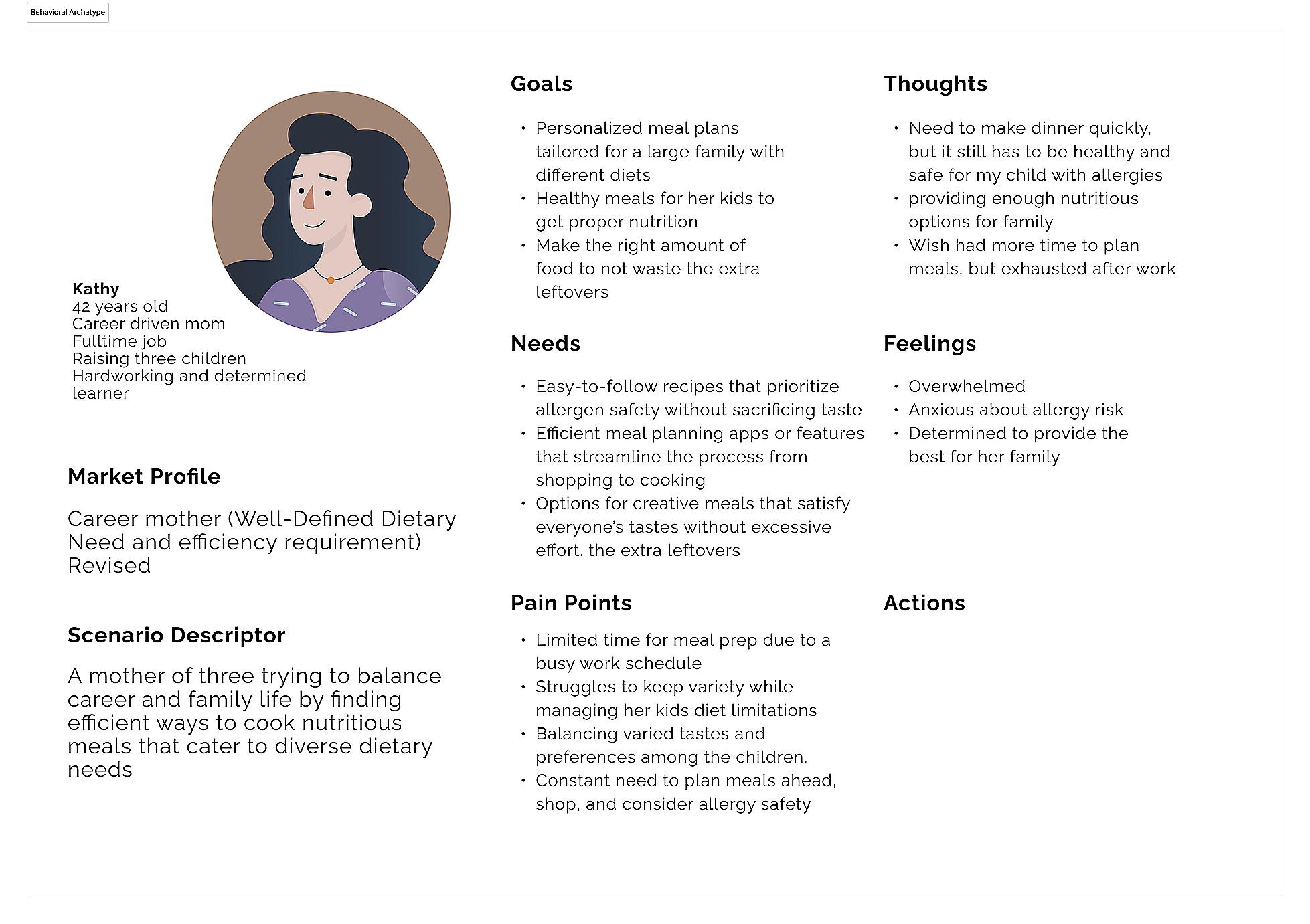Bite Buddy
A wicked problem is a complex social issue nearly impossible to solve causing difficult conclusions for agreements. New problems may arise even after solving one problem. Bite buddy is an app case study exemplifying one of the wicked problems in society today. The wicked problem category for this case study is food, health, education and sustainability.
Overview
Case Study Scope
Responsibilities
Behavioral Archetype
Problem statement
Wireframes
Prototype
Conducting user testing interviews
Team
Yunna Choi
Giovanni Della Pace
Alonzo Rivera
Nghi Phan
Jaren Ko
Project Type
UC Irvine Division of Continuing Education
UI/UX bootcamp program
Competitor Analysis
Behavioral Archetype
Duration
4 weeks
November 2024 - December 2024
Problem
Busy individuals who face time constraints and limited ingredients need a way to simplify home cooking because they want to save money, reduce reliance on eating out, and incorporate culturally inspired meals that support their health and well being.
Goal
The goal is to create an app relevant to a wicked problem in today’s society. We created an AI recipe generator app for multicultural cuisines, which include cooking recipes that are less time consuming for users to help reduce waste, include cost-saving benefits and improve on cooking apps that are currently in the market.
Behavioral Archetype
Our team first each came up with an individual archetype to form a defined behavioral archetype of our user. We agreed on two behavioral archetypes as the “Culinary Explorer” (explore various types of food) and the “ Healthy Seeker” (well-defined dietary need). Eventually, our archetype became more focused as we continued our research to a mother of three children trying to balance career and family life by efficiently cooking diverse nutritious meals. Please meet Kathy.
Hypothesis
We believe that cooking assistive instruction can address general health and dietary challenges by offering personalized, culturally relevant and nutritionally balanced meal plans tailored to individuals, making healthy eating accessible for everyone.
Interviews
We organized our questions into three themes: “about diet and health,” “home cooking and meal planning,” “user method AI experience” to conduct our QA Interviews and surveys to ask users and gather data for our research method. Aside from the interview, we also researched competitor analysis to see what apps were doing for recipe search generator apps.
How do you feel about AI powered tool to help plan your meal?
“Wants to improve as a home cook chef”
“Want to avoid seafood due to mercury and lead”
“I would like to filter recipes by what macronutrients I’m avoiding”
“I would like to have visual aids for recipe help”
“Catered and personalized instructional methods is important”
Affinity Map
User Flow
Wireframes
We grouped the affinity map into AI meal planning research, dietary preference, ingredients procurement, physical financial health aspirations and voted on the majority ideas users would crucially need in our app.
Prioritization Matrix
Using the affinity map, prioritization matrix, creative matrix and researched data, we focused on the main user insights.
User Insights
After gathering our data from the prioritization matrix, we were able to understand 40% rarely use online resources to find recipes and we wanted to create an app that would engage more users to start using our online app.
A person with a busy schedule needs an recipe generator to simplify cooking without the need for extensive research or learning.
A busy mom with a full-time job and family life needs a way to quickly prepare nutritious, family-friendly meals because they struggle to balance meal planning with limited time.
A budget-conscious cook needs an AI recipe generator to minimize food waste and save money by using leftover ingredients.
Foodies need an recipe generator to explore diverse cuisines and enhance their culinary skills without feeling overwhelmed.
User Journey
During the wireframe process, our team all participated in each of the elements for layout and overall design. I made revisions to the wireframe based on the navigation and filter search options after feedback, iterations and testing.
A/B Testing
During the A/B Testing stage, we asked several users to participate in our prototype testing. We had iterations made for our landing page and the search filter for searching recipes. Users also provided a suggestion to include an audio AI assistant tool into our app. We asked users to participate in another survey testing for the design.
“’I’m often looking at recipes online and I always want a “Speak” button. My hands are full, I’m running around the kitchen. Tell me what to do”
“Focus on key functioning and color consistency”



